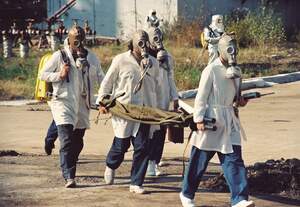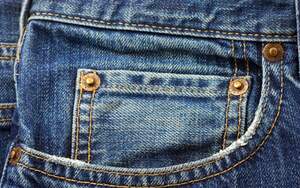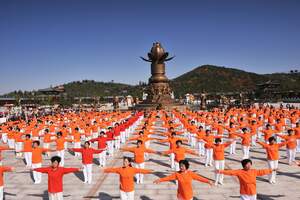

We Jump the World Day
We Jump the World Day "is all about going out with your crew, or by yourself and doing Parkour." The creators of the day, Farang Clothing, say "we essentially want a jam in every country in the world on the same day," and suggest that "you can host a huge jam in your city or go out for some casual jumps." April 29 was chosen for the day because it is the birthday of David Belle, who is considered to be the father of parkour. The Farang crew has hosted jams around the world on the day, in cities like Tokyo, Helsinki, and Dubai. On some observances, they have created a massive video composed of clips sent in by those celebrating, and they have also organized video contests for the day, where celebrants have sent in clips showing what their We Jump the World Day experience was like.
Parkour is "the practice of traversing obstacles in a man-made or natural environment through the use of running, vaulting, jumping, climbing, rolling, and other movements in order to travel from one point to another in the quickest and most efficient way possible without the use of equipment." It is an art of maintaining fluid movement despite obstacles—with ground rolls and precision jumping, it turns the urban landscape into an obstacle course. Parkour brings a sense of liberation and freedom in public spaces, and staying fit and focused is at the activity's core. Although parkour provides an individual sense of freedom, it is regularly done in a community, in what are called jams or sessions. Those performing it, called traceurs or traceueses, follow the movements of the person in front of them.
Parkour developed in France in the late 1980s and gained popularity in the following decades through internet videos, television commercials, and films, such as the 2006 adaptation of Casino Royale. Parkour traces its roots to the years prior to World War I when physical education and training methods known as "la méthode naturelle" were developed by Georges Hébert, which included jumping, running, balancing, swimming, and using obstacle courses called "parcours du combattant." Hébert's training became the basis of French military training. During the 1940s and '50s, Raymond Belle learned Hébert's methods while he was in the military. He later applied them to his work as a firefighter—he lept between roofs, scaled buildings without a ladder, and moved quickly along ledges.
Raymond Belle's son David went on to train with him. David and his friends added movements and challenges, took inspiration from the martial arts films of Bruce Lee, and called themselves Yamakasi. Modern parkour was born, and by the late 1990s, the group was giving public performances. Sébastien Foucan and David Belle left Yamakasi after disagreeing with the direction it was taking. Foucan brought it to Britain, where it came to be called freerunning. Belle's "Rush Hour," a short promo video for BBC One, helped bring parkour into the national consciousness. As parkour spread around the world, local and national parkour organizations were formed, and parkour competitions began being held. Then, in 2016, We Jump the World Day came to be!
How to Observe We Jump the World Day
Some ideas on how to celebrate include:
- Learn some parkour basics.
- Create a parkour event in your city. Make a Facebook event for it and send the event details to the day's organizers.
- During some celebrations, a massive video of the day has been created by the organizers. To participate, record a snippet of your We Jump the World Day experience. Talk to the camera and include your name, where you are in the world, and what your parkour surroundings look like. Also, include footage of your favorite jump of the day. Then send your video to the organizers.
- Learn more about David Belle.
- Sign up for parkour classes near you.
- Watch Casino Royale or another film that features parkour.
- Watch the opening of an episode of The Office that features parkour or other videos where the traceurs are more versed in parkour.
- Explore some parkour communities such as American Parkour, Parkour.com, Farang Clothing, the World Freerunning Parkour Federation, and the Fédération Internationale des Arts du Déplacement.





















